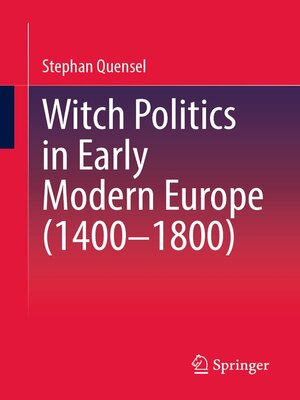
Sign up to save your library
With an OverDrive account, you can save your favorite libraries for at-a-glance information about availability. Find out more about OverDrive accounts.
Find this title in Libby, the library reading app by OverDrive.



Search for a digital library with this title
Title found at these libraries:
| Loading... |
Why does an entire society believe that there are witches who must be burned? What roles did the emerging 'state', the professions of clerics and jurists, and the public involved play in each case? And how could this project be completed?
From a sociological point of view, the findings of recent international research on witches provide a model of a more general, highly ambivalent, 'pastoral' attitude, according to which a shepherd has to care for the welfare of his flock as well as for its erring sheep.






